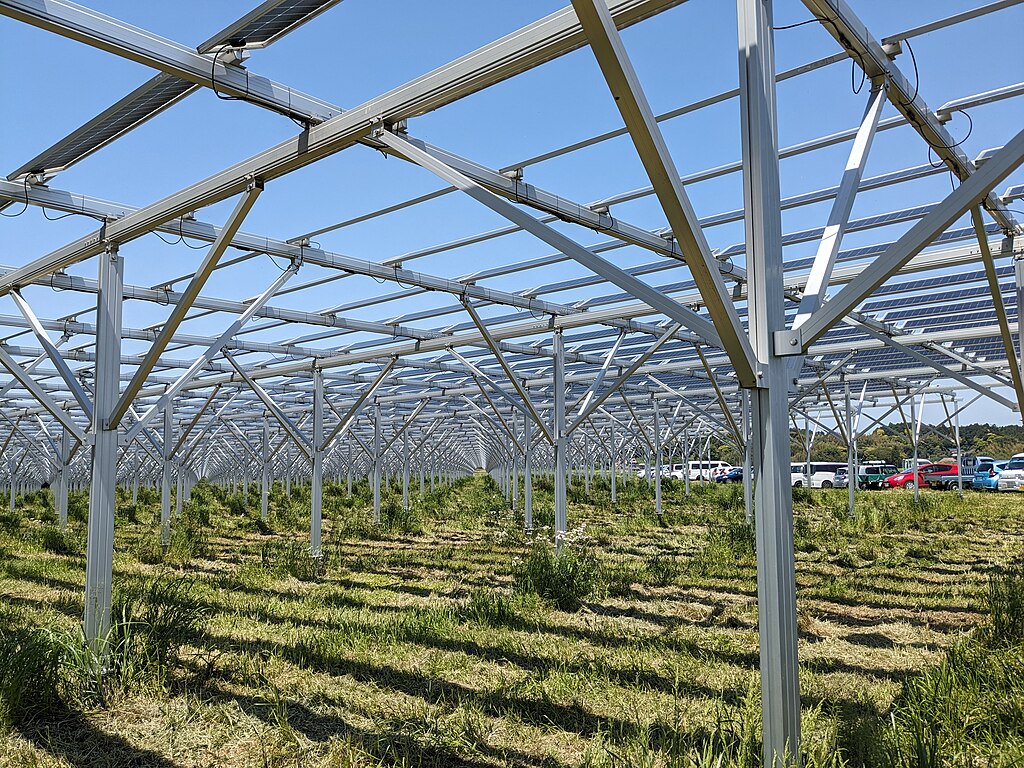In an effort to boost solar power capacity, Japan is looking to install more solar panels on farmland. While efforts go back more than a decade, widespread development has been slow to catch on. However, Japan’s solar power goals for 2030 have given new impetus to this niche. If it succeeds, it could significantly boost total solar power capacity in the country, and serve as an example to others.
Often referred to as “agrisolar,” this approach refers to the dual use of land to cultivate crops and generate electricity from solar panels installed above farmland. In Japan, it’s also called “solar sharing,” while in Europe and North America it’s known as agri-voltaics. Whatever the name, this approach to solar allows operators to generate extra income from producing clean electricity.
The dual-use / dual-income strategy is gaining more traction in Japan recently with international solar developers and big domestic firms getting involved. For some, this is a chance to test new technologies. For many, this is an avenue for new capacity growth, with large-scale utility solar projects today facing challenges such as a shortage of open space and increasing scrutiny from residents who see solar farms as an eyesore or worry about panels located on steep slopes.
Japan NRG takes a closer look at the challenges and opportunities facing the agrisolar industry.

